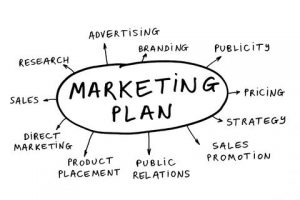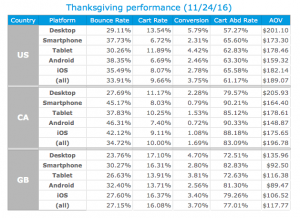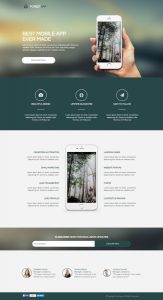Interactivity tends to lead to better engagement, and it’s thought that better user engagement equals more conversions and more long term satisfaction with a brand.
The web is an inherently interactive medium, so there are infinite ways to implement interactivity onto your site.
Of course, it’s not a silver bullet strategy. Just because something is cool or popular – or just because it looks cool – doesn’t mean it works on the bottom line. There are some pros, cons, and uncertainties to this strategy, just as there are any others.
This article will explore the effectiveness of interactivity and will put the strategy into context so you can better execute it (if you choose to at all).
Why We Love Interactivity
People like to be engaged in what they’re doing.
Remember back in school, when your favorite classes were the ones where you played games, or at least got to participate in some meaningful or creative way? I certainly much preferred creative projects and hands-on work rather than passive lectures.
Well it turns out that interactive education is not only more fun, but also more effective.

This is something online courses sometimes struggle with, as they lack the in-person components and the benefits that come with that. Though, online education is certainly innovating to make it much more interactive.
Interactivity works online, for your business, too. Done right, it increases user engagement, and user engagement, as heuristic, tends to correlate higher conversions (though not always – sometimes it distracts from the desired action).
Generally, interactivity makes us feel involved in the process, not simply a passive observer.
Interactive elements draw a user in and allow them to feel like they’re part of the process, instead of a passive user to be sold to. And we know that because of the principles of Commitment and Sunk Costs, if someone expends energy or puts time into something, they’re more likely to complete said task.
This is essentially the strategy at play when a company, like Upworthy, asks you a no brainer question before asking for your email:

We published an academic insight that showed consumers were generally more drawn to interactive photos than static ones. In addition, it showed that the positive emotions registered were due more to hedonic information (fun) than instrumental information (userful).
There’s been a lot of research about interactivity in different realms – education, entertainment, etc. – but online it appears the broadest implication of interactive elements is that they can increase user engagement.
A History of Interactivity in Marketing
Interactive marketing is not new. Something that is interactive is simply a “two-way flow of information.” Therefore it could take the form of a sales call, a live chat conversation, a game, or literally an infinite amount of other iterations.
As a marketing concept, interactive marketing sort of began as an antithesis to mass marketing. While it wasn’t necessarily personalization at the scale we see today (or will in the future), interactive advertising was another iteration where that famous phrase, “one-to-one marketing,” echoed everywhere.
In fact, it seems that the early roots of interactive marketing have blossomed into what we know as personalization or marketing automation today. According to a 1996 HBR article, interactive marketing included “the ability to address an individual and the ability to gather and remember the response of that individual.”
Then, according to the article, you are afforded a third opportunity: you can reach out to customers based on this interaction to provide a tailored experience.
Reading the discourse on interactive marketing from the past few decades made me realize there are many similarities with how we talk about personalization and targeting today. Both ideas are about narrowing their experiences to one person (ideally), both emphasize a two way interaction that feeds into creating a unique experience as an output, and both ideas are generally misunderstood and mis-measured by the people implementing them.
No one knows what success even looks like (Image Source)
(By the way, read the HBR article. It’s got some hilarious predictions about the internet’s effects on marketing, like, “But don’t assume that [your] Web site is going to be one of your key marketing venues.”)
Anyway, interactive advertising evolved as a method in attempt to bridge the dichotomy between new media and traditional advertising. It sought (and still does online, by the way) to stand out from the noise of passive advertising.
You’ve undoubtedly seen an example of advertising in a traditional medium, for example…
Here are some more examples in more traditional marketing channels…
Interactive print ads
Not all print ads are bland and solely brand focused. Aside from QR codes, there are infinite ways to spur interactivity with print (for the creative, at least).
For instance, Motorola and Wired found a way to customize a phone design within the magazine:
Or take Nivea, who helped parents supervise their children at the beach with a tracking wristband and app:
Interactive Banner Ads
Remember interactive banner ads? The ones where you could play those stupid little games? I loved those. Banner ads don’t have to suck. Take it from these examples:
Interactive direct mail
Interactive direct mail, in the flashy way like the examples above, probably isn’t as common, if only because of the costs associated with the scale of direct mail. Though of course, the best direct mail is all interactive – asking you to write in or scan a QR code or whatever.
But you can also get creative to generate more awareness for the brand message:

Of course, the web offers a much greater opportunity to implement interactivity. It is, by nature, an interactive environment (we’re pretty much always interactive with content in some way – hence the term human-computer interaction).
5 Ways to Implement Interactivity On Your Site
While filling out a lead gen form is technically interactivity, for this article I’m going to focus on the more creative iterations of that idea. There are plenty of examples, many effective and some not.
1. Interactive Content Marketing and Lead Gen
Content marketing is an effective but increasingly crowded channel. Interactive content is a way to break through that noise.

Again, depending on your goals and resources, there are infinite iterations of interactivity in content marketing. But here are a few popular and effective ways people are doing it today…
Interactive Infographics
Instead of just hoping for the backlinks to roll in, with interactive infographics you can:
- Collect leads with Google Forms integration.
- Gain new insights by implementing polls.
- Simply create better visualization and engagement
Here’s an example of an interactive infographic:
Interactive Ebooks
You can also add interactivity to ebooks, which are traditionally thought of as quite static (and some would say not so effective).
Aniruddh Jain wrote on our blog a while back about a few different ways you could add interactivity within the ebook itself:
- Add live chat
- Add contact forms
- Add landing pages
- Add video
Not only does this make the content more engaging, but it decreases friction while you have your prospect’s attention and eases them into a higher value conversion.

You can implement cool stuff as well as A/B test different elements with a tool like Sales Patron.
Quizzes and Surveys (lead gen or otherwise)
Buzzfeed started the trend (but Clickhole perfected it), and now lots of content marketers are introducing quizzes into their creative mix – either as a complement to their article or standalone.
Some are using it as a lead gen tactic (gating the results), and some are simply using it to increase engagement, shares, or whatever else you’re measuring.
Here Copyhackers uses a quiz as a bonus at the end of a long form article:

Marketizator uses a quiz as a standalone piece of content:

By the way, all that talk about customer personas? If you’ve done your quantitative clustering, these interactive quizzes or surveys can help you segment your personas by self-selection.
An example is Craft Coffee, who personalizes the web experience based on your answers to a survey:

Interactivity helps customize the experience for customers on websites like Trunk Club:
According to a whitepaper by Oracle and SnapApp, these types of interactive elements help during the Awareness stage, when a customer is first discovering your brand.
2. Interactive tools, calculators, spreadsheets, etc.
In Traction, they refer to it as Engineering as Marketing, but it’s really just creating interactive tools for people to use. Turns out, adding value (especially the kind that is related to your core offer) is good for business and makes people happy.
It’s talked about a ton, but HubSpot’s Website Grader is a good example of this.

Neil Patel also runs the ‘interactive marketing tool’ tactic, though his appears to be total BS based on the outputs (they’re the same for any inputs you try – the screenshot below is for google.com):

That’s a dark pattern. Don’t do that.
Some more good examples of interactive tools include:
- Business time & money savings calculator.
- This guy’s interactive resume.
- Customer Lifetime Value calculator.
- Evan Miller’s A/B test sample size calculator.
- Brian Balfour’s Time Management Matrix.
3. Interactive Feedback and Support
As you know, a large part of conversion optimization is gathering data – both qualitative and quantitative – to gather insights that leader to better A/B tests.
Interactive elements help you with that, too. Notably, they allow you to collect data in a conversational way. Two types of interactive insight tools you can use:
- Live chat
- User feedback tools
Live chat
First off, live chat is a great strategy to increase conversions (if you can make it work on an operational level). Research shows that live chat works best in younger demographics and for lower-level transactions (clothes shopping), but it’s a customer service strategy worth exploring for any business really. For example, I hate going to my bank or talking to them on the phone, so I use live chat all the time:

It’s usually better than a static FAQ page (though no one says you can’t have both).
You can also gather great qualitative (and sometimes quantitative) feedback with live chat. You can gather quantitative data by tagging people based on complaints, problems, desires, or anything else you have the analysis power to discover. This can help quantify common issues to figure out what’s important to fix/test.
Live chat is also a great way, along with other feedback tools, to gather voice of customer data.
Feedback tools
It’s a best practice in customer success to give customers an outlet (many outlets) to complain before they feel the need to do so public. That way you can perform damage control and possibly even flip that person into a promoter. As Lincoln Murphy, Growth Architect at Winning By Design, said:
 Lincoln Murphy:
Lincoln Murphy:
“Make sure you give the customer other places to provide feedback ad hoc: feature requests, bug reports, open support tickets, chat with your team, etc.
Don’t let the NPS survey be the only way – or the only time – they can feedback to you.
Continually remind them that those other feedback modalities are there for them to use.
This way, when you do get a detractor you know it’s probably legit and not venting all of the pent up – and not even entirely negative but it becomes so with no outlet – sentiment.”
For non-customers, you can use:
- Interactive chat or surveys on high touch sales pages (whichever drives more response)
- Interactive surveys on category pages (help refine your content strategy by category)
For customers, you can also add in-app interactive chat (like Intercom), and you can also open up easy and fast email communication.
Then, of course, you should be using this feedback to form better test hypotheses. Tools you can use for this (in different facets) include:
There are tons of tools. The important part is the strategy, so don’t get too bogged down in the differences between tools.
So far, the interactive elements explored have been fairly straightforward. The next two are a bit more innovating (and therefore risky).
4. Interactive product photos
As mentioned above, an academic insight published on ConversionXL Institute showed consumers were generally more drawn to interactive photos than static ones. In addition, it showed that the positive emotions registered were due more to hedonic information (fun) than instrumental information (userful).
A big drawback of online shopping, especially for something tactile like clothing, is that you can’t see or feel the item in person. Any strategy that can bridge the gap between the virtual and the tangible has a good chance of being effective.
In practice, try testing interactive product photos for products that are primarily experience-driven (artwork, clothing, fabrics, jewelry.)

Shoogleit is a free website that helps create interactive product pictures.
5. Page flipping
ConversionXL Institute also published an academic insight on page flipping as an interactivity tactic. Their findings were mixed. People liked it better, but seemed to be worse at retaining the information.

So it goes for most ‘cool’ design features. While it gathers attention, some of it is novelty, and some of it is distracting.
Our recommendation: think about where you’re using interaction techniques. In particular, try to use them only on pages that don’t require full cognitive effort (brand catalogues are probably a good use, but maybe not sales pages or informational articles).
If interested, you can use a tool like Flipping Book to create page flipping.
Where Interactivity Could Fall Short
No matter what purchase funnel model you’re looking at, they all usually start with some sort of “attention” or “awareness” metric. Somewhere after attention is “engagement” and so on until users funnel down into purchases and repeat purchases, etc.

For instance, with the popular AIDA framework, attention and interest might be peaked, but desire and (especially) action, haven’t necessarily been taken into account.

Interactive content seems to be especially powerful at the attention and engagement phases. But just like cute design elements, they can be distracting to the final conversion. Especially if you’re running fairly prototypical eCommerce business.
Sometimes, people just want to accomplish their shit and move on.
So it’s a balancing act. Of course you want user/customer engagement, not at the cost of distraction and missed conversions.
How do you solve for this? Think about Fogg’s behavior model, notably portion of it. While designing interactive elements, make sure the task is always completable and the user experience is always effortless. Don’t make your users think too much in order to buy stuff.

Absolutely the biggest threat of something like interactive design elements is that you’re just adding them because they’re cool or hip. Marketers do that with all kinds of tactics. There’s an amazing quote from that HBR article I cited earlier, and this comes way back from 1996:
 Frederick E. Webster, Jr:
Frederick E. Webster, Jr:
“As managers become enchanted with the potential of the Internet and the interactive marketplace, many show evidence of forgetting some basic lessons of marketing strategy that they learned the hard way over the past several decades.
The most central of these are the importance of defining and understanding the customer, the essential efficiency of market segmentation and targeting, and the life-or-death importance of product positioning and the value proposition.
Simply put, there is a real and persistent danger that, caught up in the excitement and hype of a new technology, marketers will once again let attention to the short-term and tactical overwhelm consideration of the long-term and strategic. In the new world of interactive marketing, tactics often precede strategy.”
Think about that, not just with interactivity, but with any trendy features or tactics you’re planning on implementing.
Conclusion
Interactivity in marketing is not new. Marketers are always trying to break through the noise, and making traditional advertising interactive is a way many do so.
We’re seeing the same thing with websites today – whether in the form of interactive content, quizzes for lead gen, interactive product photos, or other creative elements.
While you may see trends like this and think you should jump on, always stop to think about the end goal. Just because something generates more attention or engagement doesn’t mean that translates to sales.
So if you’re planning on implementing creative interactivity tactics, think first of what you’re hoping to accomplish with it. Then use A/B testing to empirically decide if it’s actually working towards that goal.
Digital & Social Articles on Business 2 Community(345)
Report Post









